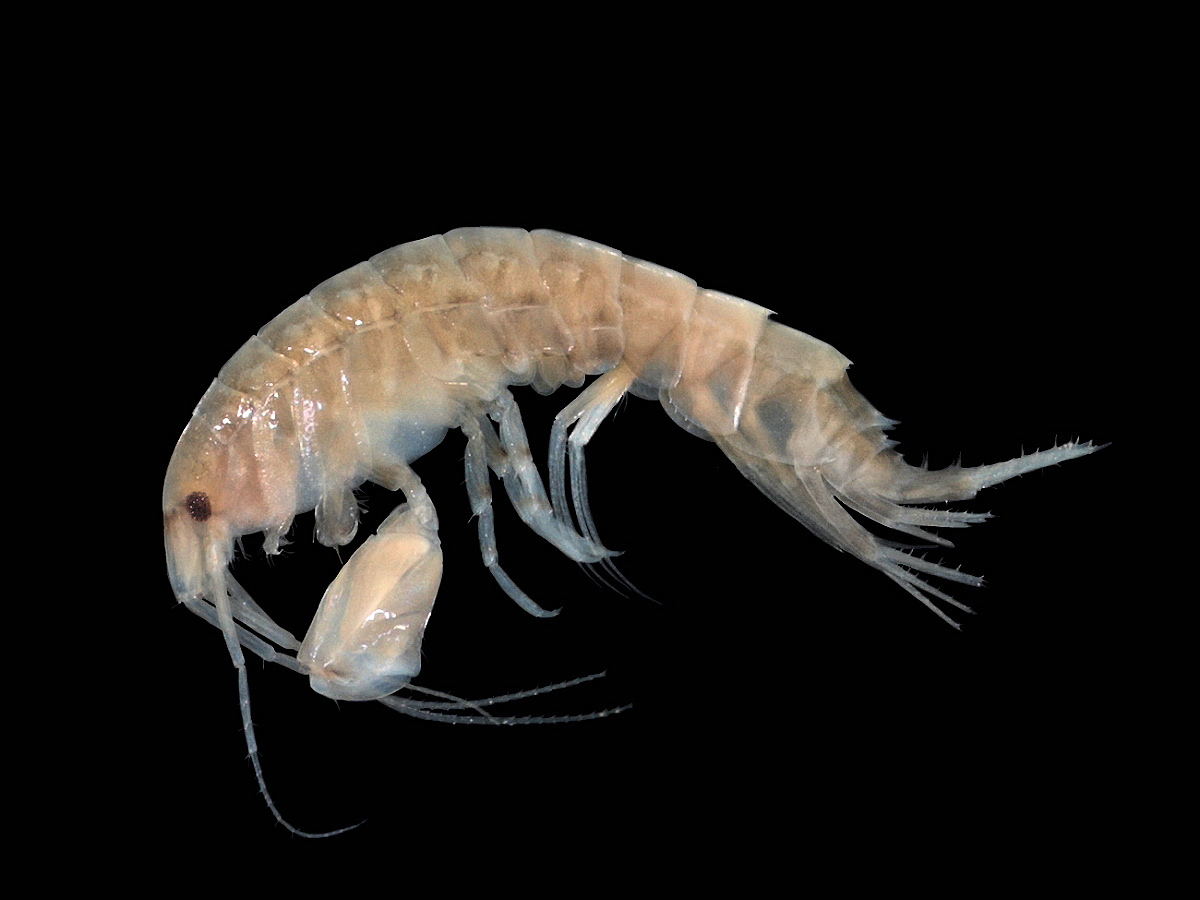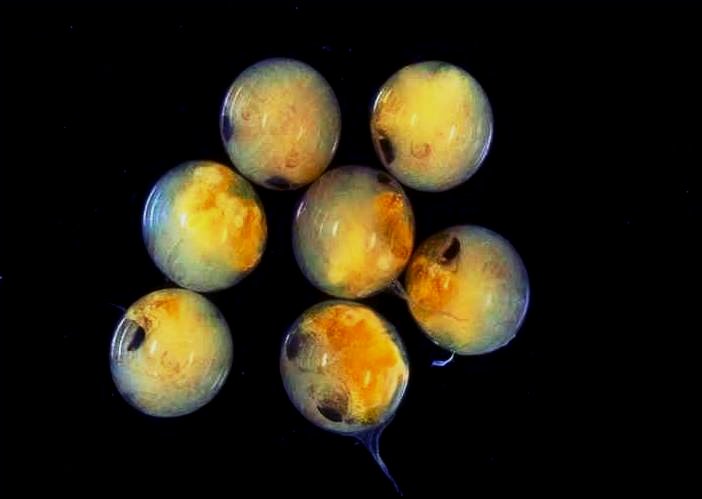|
Temora Discaudata
''Temora discaudata'' is a copepod in the family Temoridae Temoridae is a family Family (from la, familia) is a group of people related either by consanguinity (by recognized birth) or affinity (by marriage or other relationship). The purpose of the family is to maintain the well-being of its mem .... It was first described in 1849 by James Dwight Dana, being placed in the '' Calanus'' genus. It was described as a member of the ''Temora'' genus in 1889 by Prussian zoologist Wilhelm Giesbrecht. The female measures between 1.68 mm to 2.05 mm in length, while the male ranges between 1.65 and 1.85 mm. It is found in the Pacific, Indian, and (marginally) Atlantic Oceans. References Temoridae Crustaceans of the Atlantic Ocean Crustaceans of the Indian Ocean Crustaceans of the Pacific Ocean Crustaceans described in 1889 {{Crustacean-stub ... [...More Info...] [...Related Items...] OR: [Wikipedia] [Google] [Baidu] |
Copepod
Copepods (; meaning "oar-feet") are a group of small crustaceans found in nearly every freshwater and saltwater habitat. Some species are planktonic (inhabiting sea waters), some are benthic (living on the ocean floor), a number of species have parasitic phases, and some continental species may live in limnoterrestrial habitats and other wet terrestrial places, such as swamps, under leaf fall in wet forests, bogs, springs, ephemeral ponds, and puddles, damp moss, or water-filled recesses (phytotelmata) of plants such as bromeliads and pitcher plants. Many live underground in marine and freshwater caves, sinkholes, or stream beds. Copepods are sometimes used as biodiversity indicators. As with other crustaceans, copepods have a larval form. For copepods, the egg hatches into a nauplius form, with a head and a tail but no true thorax or abdomen. The larva molts several times until it resembles the adult and then, after more molts, achieves adult development. The nauplius form is so ... [...More Info...] [...Related Items...] OR: [Wikipedia] [Google] [Baidu] |
Temoridae
Temoridae is a family of copepods, containing the following genera Genus ( plural genera ) is a taxonomic rank used in the biological classification of living and fossil organisms as well as viruses. In the hierarchy of biological classification, genus comes above species and below family. In binomial ...: *'' Epischura'' S. A. Forbes, 1882 *'' Epischurella'' Smirnov, 1936 *'' Eurytemora'' Giesbrecht, 1881 *'' Ganchosia'' Oliveira, 1946 *'' Heterocope'' G. O. Sars, 1863 *'' Lahmeyeria'' Oliveira, 1946 *'' Temora'' Baird, 1850 References Crustacean families {{copepod-stub ... [...More Info...] [...Related Items...] OR: [Wikipedia] [Google] [Baidu] |
James Dwight Dana
James Dwight Dana FRS FRSE (February 12, 1813 – April 14, 1895) was an American geologist, mineralogist, volcanologist, and zoologist. He made pioneering studies of mountain-building, volcanic activity, and the origin and structure of continents and oceans around the world. His zoological author abbreviation is Dana. Early life and career Dana was born February 12, 1813, in Utica, New York. His father was merchant James Dana (1780–1860) and his mother was Harriet Dwight (1792–1870). Through his mother he was related to the Dwight New England family of missionaries and educators including uncle Harrison Gray Otis Dwight and first cousin Henry Otis Dwight. He showed an early interest in science, which had been fostered by Fay Edgerton, a teacher in the Utica high school, and in 1830 he entered Yale College in order to study under Benjamin Silliman the elder. Graduating in 1833, for the next two years he was teacher of mathematics to midshipmen in the Navy, and sailed ... [...More Info...] [...Related Items...] OR: [Wikipedia] [Google] [Baidu] |
Calanus
''Calanus'' is a genus of marine copepod in the family Calanidae (Order Calanoida). The genus was split in 1974, with some species being placed in a new genus, '' Neocalanus''. The following species are recognised: *'' Calanus aculeatus'' Brady, 1918 *'' Calanus agulhensis'' De Decker, Kaczmaruk & Marska, 1991 *'' Calanus chilensis'' Brodsky, 1959 *'' Calanus dorsalis'' (Rafinesque, 1817) *'' Calanus euxinus'' Hulsemann, 1991 *''Calanus finmarchicus ''Calanus finmarchicus'' is a species of copepods and a part of zooplankton, which is found in enormous amounts in the northern Atlantic Ocean. Distribution and ecology ''Calanus finmarchicus'' is most commonly found in the North Sea and the Nor ...'' (Gunnerus, 1770) *'' Calanus glacialis'' Jaschnov, 1955 *'' Calanus helgolandicus'' (Claus, 1863) *'' Calanus hyperboreus'' Krøyer, 1838 *'' Calanus jashnovi'' Hulsemann, 1994 *'' Calanus marshallae'' Frost, 1974 *'' Calanus pacificus'' Brodsky, 1948 *'' Calanus propinquus'' Brady ... [...More Info...] [...Related Items...] OR: [Wikipedia] [Google] [Baidu] |
Temora (crustacean)
''Temora'' is a genus of copepods in the family Temoridae. The World Register of Marine Species lists the following species: *''Temora discaudata'' Giesbrecht, 1889 *''Temora kerguelensis'' Wolfenden, 1911 *''Temora longicornis'' (Müller O.F., 1785) *''Temora stylifera'' (Dana, 1849) *''Temora turbinata'' (Dana, 1849) Additionally, ''Temora curta'' (Dana, 1849) is considered a taxon inquirendum. Species brought into synonymy A number of species previously included in this genus have been moved to the ''Eurytemora'' genus: * ''Temora affinis'' Poppe, 1880 and ''Temora inermis'' Boeck, 1865 (now ''Eurytemora affinis affinis'' Poppe, 1880) * ''Temora clausii'' Hoek, 1878 and ''Temora velox'' Lilljeborg, 1853 (now ''Eurytemora velox ''Eurytemora'' is a genus of copepods in the family Temoridae. The World Register of Marine Species lists the following species: Species *''Eurytemora affinis'' (Poppe, 1880) *'' Eurytemora americana'' Williams, 1906 *'' Eurytemora arctica'' Wil ... [...More Info...] [...Related Items...] OR: [Wikipedia] [Google] [Baidu] |
Wilhelm Giesbrecht
Wilhelm Giesbrecht (1854–1913) was a Prussian zoologist, specialising in copepods, during the "golden age of copepodology". Giesbrecht was born in Gdańsk in 1854, and was educated in Kiel, where in 1881 he earned a Ph.D. in Baltic copepods under Professor Karl Möbius. He then moved to Naples to work at the zoological station there, staying there for the remainder of his life. His most famous work is the 1892 monograph Systematik und Faunistik der pelagischen Copepoden des Golfes von Neapel und der angrenzenden Meeres-Abschnitte' ("Systematics and faunistics of the pelagic copepods of the Gulf of Naples and neighbouring seas"). In 1904, at the request of Anton Dohrn, Giesbrecht was made an honorary professor. He is commemorated in a number of species names: *''Prostheceraeus giesbrechtii'' Lang, 1884 *'' Buntonia giesbrechti'' (G. W. Müller, 1894) *'' Onchocorycaeus giesbrechti'' (F. Dahl, 1894) *''Stenhelia giesbrechti'' T. & A. Scott, 1896 *'' Pseudocyclopia giesbrechti'' ... [...More Info...] [...Related Items...] OR: [Wikipedia] [Google] [Baidu] |
Crustaceans Of The Atlantic Ocean
Crustaceans (Crustacea, ) form a large, diverse arthropod taxon which includes such animals as decapods, seed shrimp, branchiopods, fish lice, krill, remipedes, isopods, barnacles, copepods, amphipods and mantis shrimp. The crustacean group can be treated as a subphylum under the clade Mandibulata. It is now well accepted that the hexapods emerged deep in the Crustacean group, with the completed group referred to as Pancrustacea. Some crustaceans ( Remipedia, Cephalocarida, Branchiopoda) are more closely related to insects and the other hexapods than they are to certain other crustaceans. The 67,000 described species range in size from '' Stygotantulus stocki'' at , to the Japanese spider crab with a leg span of up to and a mass of . Like other arthropods, crustaceans have an exoskeleton, which they moult to grow. They are distinguished from other groups of arthropods, such as insects, myriapods and chelicerates, by the possession of biramous (two-parted) l ... [...More Info...] [...Related Items...] OR: [Wikipedia] [Google] [Baidu] |
Crustaceans Of The Indian Ocean
Crustaceans (Crustacea, ) form a large, diverse arthropod taxon which includes such animals as decapods, seed shrimp, branchiopods, fish lice, krill, remipedes, isopods, barnacles, copepods, amphipods and mantis shrimp. The crustacean group can be treated as a subphylum under the clade Mandibulata. It is now well accepted that the hexapods emerged deep in the Crustacean group, with the completed group referred to as Pancrustacea. Some crustaceans (Remipedia, Cephalocarida, Branchiopoda) are more closely related to insects and the other hexapods than they are to certain other crustaceans. The 67,000 described species range in size from '' Stygotantulus stocki'' at , to the Japanese spider crab with a leg span of up to and a mass of . Like other arthropods, crustaceans have an exoskeleton, which they moult to grow. They are distinguished from other groups of arthropods, such as insects, myriapods and chelicerates, by the possession of biramous (two-parted) limbs, and by thei ... [...More Info...] [...Related Items...] OR: [Wikipedia] [Google] [Baidu] |
Crustaceans Of The Pacific Ocean
Crustaceans (Crustacea, ) form a large, diverse arthropod taxon which includes such animals as decapods, seed shrimp, branchiopods, fish lice, krill, remipedes, isopods, barnacles, copepods, amphipods and mantis shrimp. The crustacean group can be treated as a subphylum under the clade Mandibulata. It is now well accepted that the hexapods emerged deep in the Crustacean group, with the completed group referred to as Pancrustacea. Some crustaceans ( Remipedia, Cephalocarida, Branchiopoda) are more closely related to insects and the other hexapods than they are to certain other crustaceans. The 67,000 described species range in size from '' Stygotantulus stocki'' at , to the Japanese spider crab with a leg span of up to and a mass of . Like other arthropods, crustaceans have an exoskeleton, which they moult to grow. They are distinguished from other groups of arthropods, such as insects, myriapods and chelicerates, by the possession of biramous (two-parted) limbs, and b ... [...More Info...] [...Related Items...] OR: [Wikipedia] [Google] [Baidu] |





